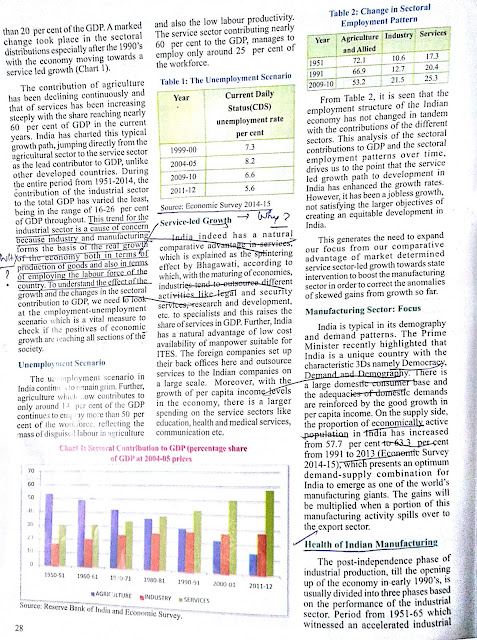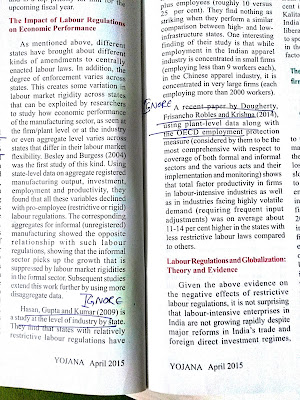Hi friends ,
Yojana is the best magazine that I would suggest aspirants to read .Avoid other magazines,as it can turn out time consuming and ineffective.
5 Reasons why Yojana is the best magazine for UPSC preparation
Many aspirants have a doubt on how to read the Yojana .How much time to spend on it ? How important is it to read Yojana ? I shall answer the same in this blog .
Things to be kept in mind while reading the Yojana:
1. Read Yojana editions of one year previous to the Mains .For Mains 2015 ,refer to Yojana from December 2014 to November 2015.Make a list of the topics of these 12 Yojanas.
Here is the list of blogs in this series so far -
Yojana is the best magazine that I would suggest aspirants to read .Avoid other magazines,as it can turn out time consuming and ineffective.
5 Reasons why Yojana is the best magazine for UPSC preparation
- It is published by the Govt of India.It can give you data,facts,etc which is accepted by Govt.
- It has a balanced opinion -both pros and cons are given
- Many toppers in the last three years have mentioned Yojana as the best magazine.
- It is very cheap -Rs.10 per magazine and also available free online.
- It covers a wide range of important topics like inclusive governance ,federalism ,international relations ,budget ,ect
Things to be kept in mind while reading the Yojana:
1. Read Yojana editions of one year previous to the Mains .For Mains 2015 ,refer to Yojana from December 2014 to November 2015.Make a list of the topics of these 12 Yojanas.
Here is the list of Yojanas for those who are taking up Mains 2015 -
- Dec 2014 -FDI and international trade
- Jan 2015 -Sanitation
- Feb 2015 -Federalism and Indian polity
- Mar 2015 -Budget
- Apr 2015 -Manufacturing Sector
- May 2015 -Tourism
- June 2015 -Alternative Medicine
- July 2015 -International Relations
- Aug 2015 -Inclusive growth and social Change
- Sep 2015 -Technology,Innovation and Knowledge Economy
- Oct 2015 -Skilled India
- Nov 2015 -Transport sector
2. Understand its relevance for the exam .It is important for Mains and Interview preparation only. Mostly Yojana is helpful for GS Paper 2 & Paper 3 ,and Essay paper.
Example - March 2015 issue -Important for GS paper 3
July 2015 issue - Important for GS Paper 2
August 2015 issue - Important for GS Paper 2 ,GS Paper 3 and essay
3. Read the Yojana only after you have finished reading the NCERTs and basic study material .
4.The objective of reading Yojana is to gather important points on the topics we have already read in the newspapers .
Step by step process of making notes -
- The Chief editors desk has some important points .
- Every Yojana had few developmental initiatives of the government explained in brief .Pay attention to those as well .
- From the contents ,select those topics which you have read in news and which is important from the exam perspective. You may find either one topic or even all the topics important. It varies from issue to issue.
What to ignore ?
- Case studies
- Examples of pilot projects
- Opinions of some minister or person.
5. Keep the GS Mains papers and Essay papers of previous years before you ,to understand how questions have been asked in Mains .
6. Maximum time you should spend on each issue shall be a maximum of 8 hours .
All the best !
PS -This is a part of series of blogs on IAS preparation.
Here is the list of blogs in this series so far -
Here is the list of blogs in this series so far -
Common mistakes committed during the interview
Here is the list of blogs ,on my experience as an IAS officer:
We are now active on every social media platform .








